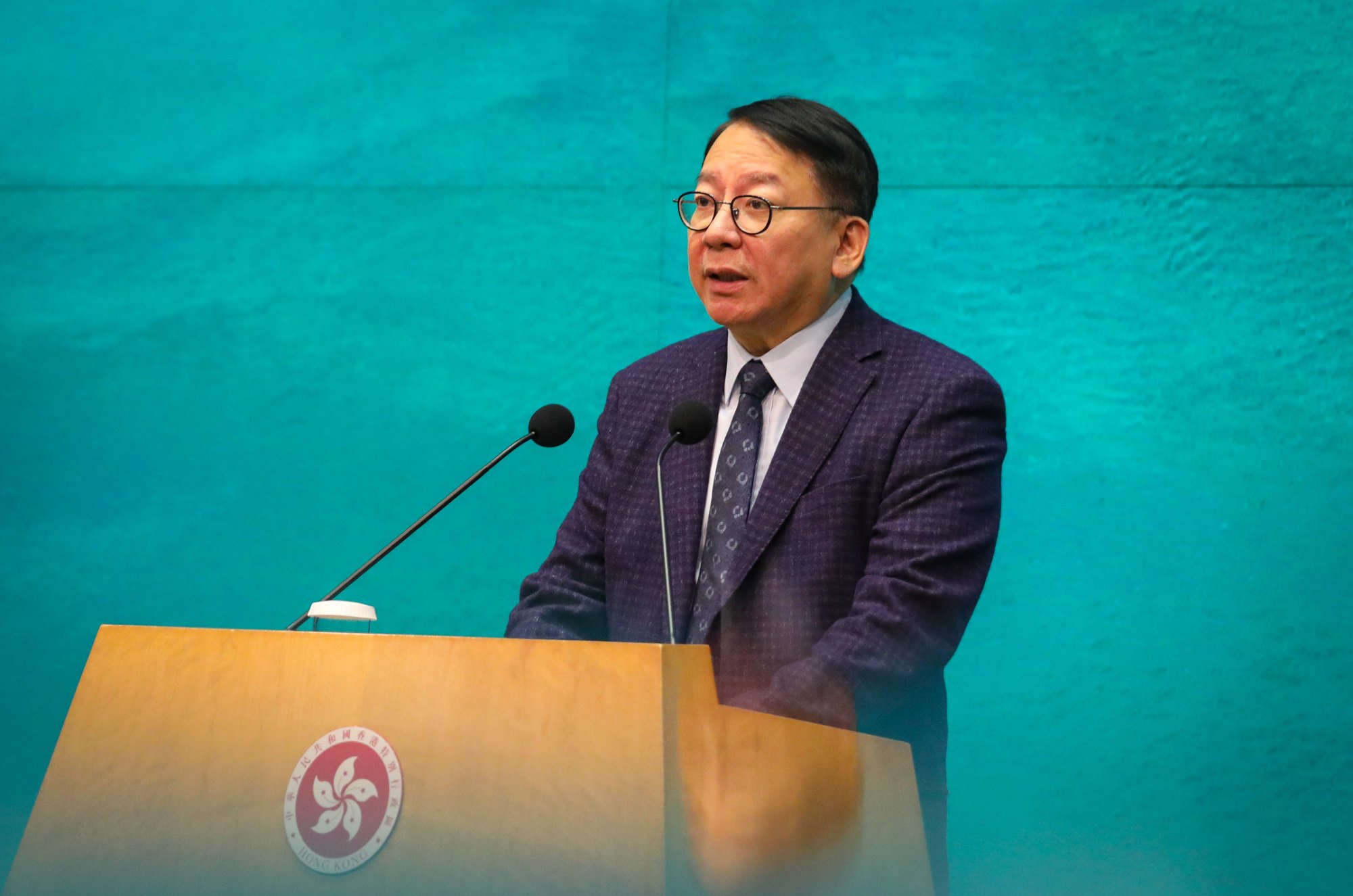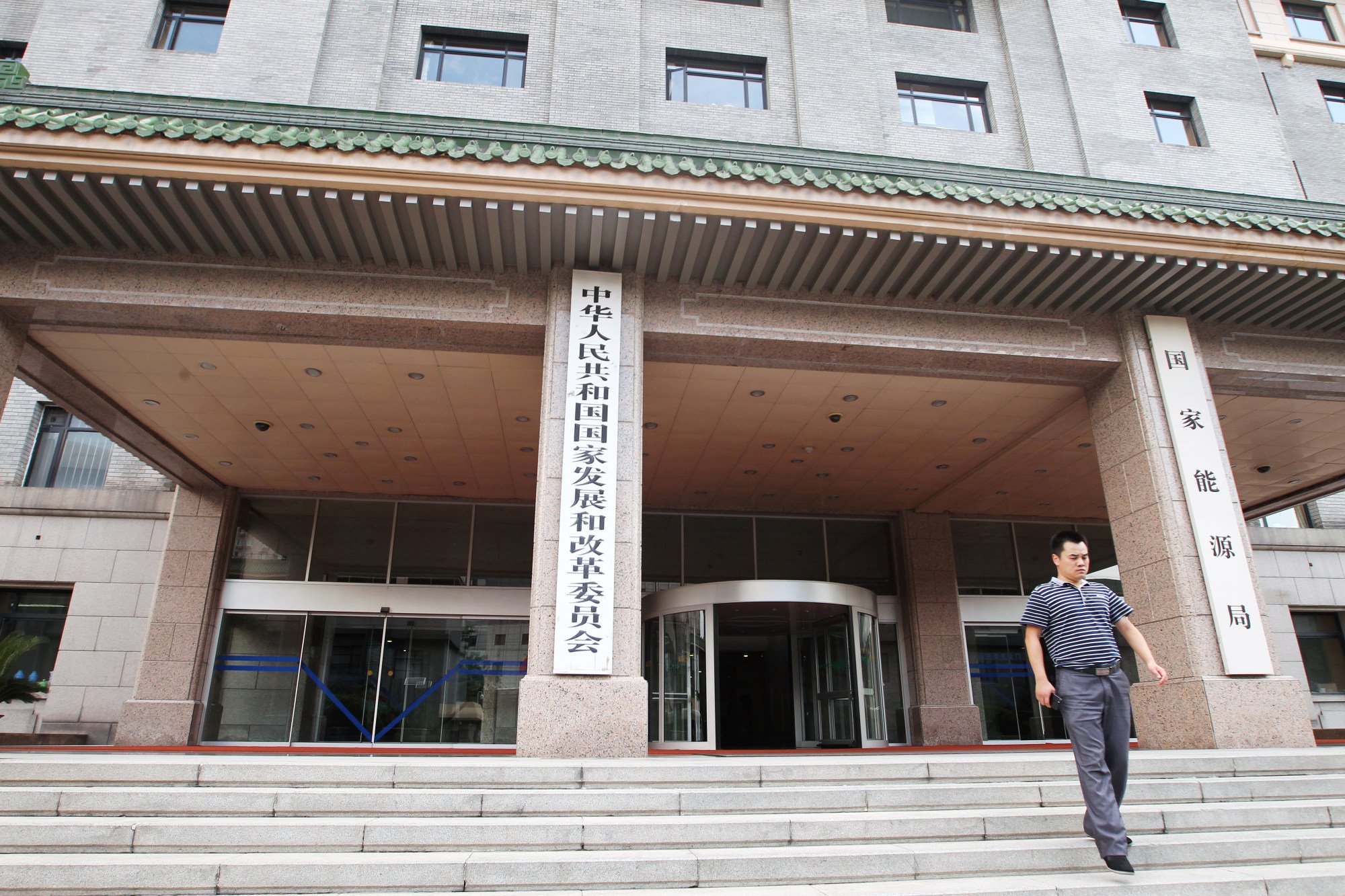
Hong Kong ‘steadfast’ in advancing Northern Metropolis project as driver for integrating with Greater Bay Area blueprint
- Chief Secretary Eric Chan also pledges to get more enterprises in Shenzhen’s Qianhai Cooperation Zone to expand overseas via Hong Kong
- Northern Metropolis is Hong Kong’s plan to develop a 30,000-hectare area near the mainland China border to provide housing and jobs
Hong Kong is “steadfastly driving” the Northern Metropolis project to be a hub for integrating with the Greater Bay Area and national development blueprint, the city’s No 2 official has said.
Chief Secretary Eric Chan Kwok-ki also pledged on Thursday to help more companies in Shenzhen’s Qianhai Cooperation Zone expand overseas via Hong Kong by deepening high-end economic collaboration in the areas of professional and logistics services.

Chan and mainland Chinese officials were reporting on the development of the bay area, first outlined by the central government in 2019.
The bay area refers to Beijing’s scheme to integrate Hong Kong, Macau and nine mainland cities into an economic powerhouse.
The Northern Metropolis is a Hong Kong government project to develop a 30,000-hectare (74,000-acre) area near the mainland border to provide housing and jobs with an “industry-driven” development approach.
Revitalise Hong Kong’s former ‘new towns’ for Northern Metropolis to succeed
The scheme includes the development of a high-end professional services and logistics hub in Hung Shui Kiu, near the Qianhai Cooperation Zone. The area will also benefit from the proposed Hong Kong-Shenzhen Western Rail Link.
“Hong Kong will cooperate with Qianhai in developing the modern services industry to promote high-quality economic cooperation in areas such as finance, logistics and professional services,” Chan said.
“Also, more Qianhai enterprises will be encouraged to make good use of Hong Kong to expand their overseas businesses.”
The press conference was held days after the National Development and Reform Commission, China’s top economic planning body, released the Overall Development Plan for the Qianhai Shenzhen-Hong Kong Modern Service Industry Cooperation Zone.

In the plan, Beijing proposed to strengthen cooperation with the science and technology industries in the Northern Metropolis, as part of broader efforts to accelerate development in the sector nationally.
Guo Lanfeng, an official from the commission who also attended the press conference, said Qianhai served as “an important platform” for supporting Hong Kong’s advantageous enterprises in expanding into the mainland market.
He said the planning of Qianhai had always highlighted the cooperation between Hong Kong and Shenzhen with a focus on serving the former’s development.
“It also closely revolves around Hong Kong in formulating policies, planning reforms, and implementing projects to fully support Hong Kong in consolidating and enhancing its competitive advantages,” Guo said.
Hong Kong and Shenzhen fintech industry groups boost links in innovation push
Qin Weizhong, Shenzhen’s deputy party chief and mayor, said that remarkable results had been achieved from Qianhai-Hong Kong cooperation.
Hong Kong investment worth US$33.66 billion had been injected into the special zone, which also incubated 600 start-ups from the city, Qin said.
Shenzhen would continue to support Hong Kong, serve the rest of mainland and be open to the world by implementing measures outlined in the Qianhai plan, he added.
Zhang Hu, Guangdong Communist Party Standing Committee member and executive vice-governor, reported that the integration among the bay area cities had been “smooth”, with more than 3,200 residents from Hong Kong and Macau in six industries having attained professional qualifications on the mainland.
CR Land backs Hong Kong’s development with Northern Metropolis property JV
To further improve the business environment of the bay area, authorities would promote marketisation, further open the economies and strengthen cross-border services with Hong Kong and Macau, he said.
Meanwhile, Chief Executive John Lee Ka-chiu also responded to Qianhai’s new plan in a forum on Thursday, saying that it highlighted the importance of developing information technology and innovation services.
He said Hong Kong could capitalise on its global network to promote innovation and technology collaborations, and seize opportunities in the development of Qianhai to contribute to the country’s high-quality development.
Guangdong unveils data transfer plans in bid to build GBA AI hub
The bay area blueprint will celebrate its fifth anniversary next year. The region covers Hong Kong, Macau and nine Guangdong cities – Guangzhou, Shenzhen, Dongguan, Foshan, Zhaoqing, Zhuhai, Huizhou, Zhongshan and Jiangmen.
Official data showed the region’s gross domestic product surpassed 13 trillion yuan (US$1.8 trillion) in 2022.
The National Development and Reform Commission on Monday also released a three-year action plan to create a world-class business environment within the bay area.
According to the 24-point action plan, more border checkpoints between Hong Kong and the mainland would open on a 24-hour basis in line with “actual needs”, while “breakthroughs” in measures to attract city talent across the border were promised.


